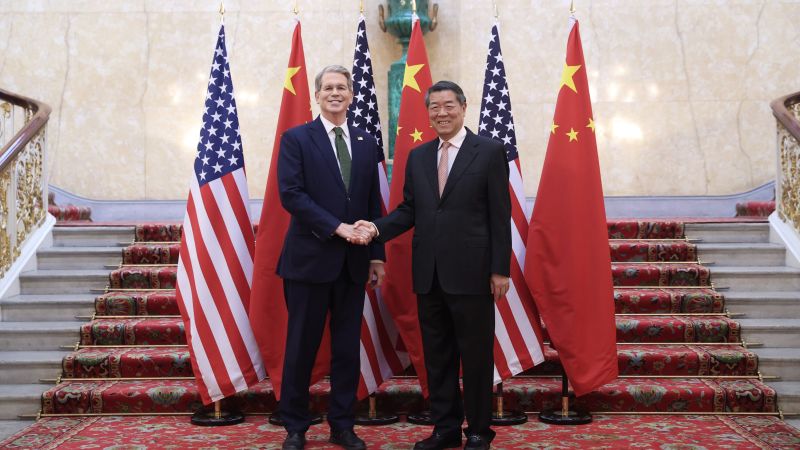
Trump’s China ‘truce’ is nothing of the sort
CNN
At long last, the United States has reached a trade agreement with China. Again.
At long last, the United States has reached a trade agreement with China. Again. After a testy war of words that escalated into a tit-for-tat restriction on key exports, American and Chinese officials this week met in the United Kingdom with a singular goal: Find a way to agree to what they had agreed to a month earlier in Geneva. It appears the countries’ top trade negotiators have accomplished that. On Tuesday night, both Chinese and Trump officials said they had agreed to a framework to implement the consensus they reached in May, and the trade truce would be sent to their respective leaders for their approval. Businesses, consumers and Wall Street investors will no doubt breathe a sigh of relief: Burdensome tariffs have raised significant anxiety, and easing trade barriers between the world’s two largest economies should lower costs and help inject some much-needed certainty into an economy that has been demonstrating some signs of strain. But in reality, the trade truce – if that’s really what was accomplished this time around – is mostly just a return to the already-tense state of affairs from before April 2. Tariff rates from both countries remain historically high, and significant export restrictions remain in place. The United States has not opened its doors to China’s autos, nor is it going to sell its high-end AI chips anytime soon. And, in President Donald Trump’s parlance, China isn’t treating America much more “fairly” after this agreement than it did before.

Paramount has upped the ante in its hostile takeover bid for Warner Bros. Discovery, announcing Monday that Larry Ellison will personally guarantee the tens of billions of dollars he is putting up to bankroll the transaction. The Ellisons will also let shareholders peer into the finances of their family trust.












